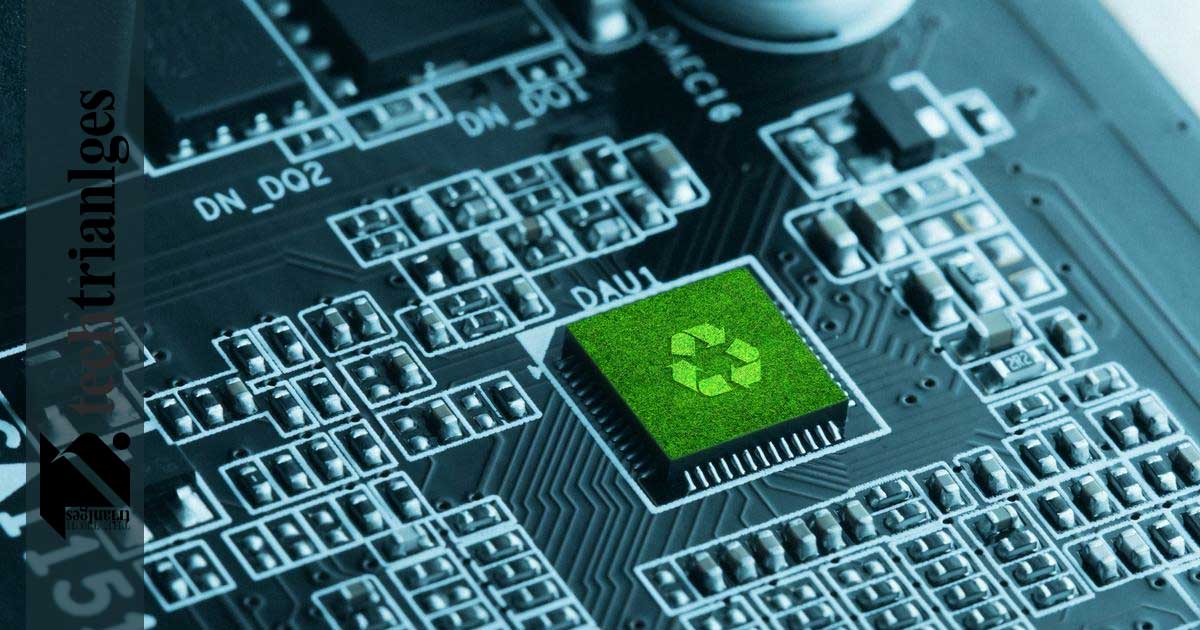Green technology refers to technological innovations and practices that reduce the negative impact on the environment. Some objectives are the conservation of the environment, the reduction of the carbon footprint, and the promotion of renewable energy, among others. Solar energy, wind energy, sustainable transport, and waste management are examples of green technology.
Green technology began to take on relevance in the 1970s when there was an increase in human awareness of environmental problems, such as the depletion of natural resources or pollution. In this EcologíaVerde article, we will talk in more detail about what green technology is, its objectives and examples, as well as information about the possible impacts it can have on the environment.
What is green technology?
Green technology, also known as eco-technology or environmental technology, refers to the set of technological innovations and practices that are designed and continue to be designed to reduce the negative impact on the environment as a result of human activities.
Green Technology Goals
The main objective of green technology is to promote practices and solutions to reduce environmental impact, guarantee a more sustainable future, and preserve natural resources for future generations. From this main objective, there are some specific objectives such as:
- Environmental conservation: Green technology seeks to develop and promote technologies that minimize pollution and conserve natural resources, such as water, air, and soil. This is possible to achieve thanks to the use of renewable energy, efficient waste management, emission reduction, and the promotion of conservation practices.
- Reducing the carbon footprint: Green technology also aims to reduce the emission of greenhouse gases and combat climate change. This involves the development and implementation of clean technologies, such as solar, wind, hydroelectric, and geothermal power, as well as encouraging more efficient energy practices.
- Promotion of renewable energy: seeks to promote the use of renewable energy sources and reduce dependence on fossil fuels. This includes the development of more efficient technologies for the capture and storage of renewable energy, as well as the integration of renewable energy systems into existing infrastructures.
- Development of clean technologies: focuses on the development of technologies and industrial processes that are cleaner and less harmful to the environment. This implies working on all stages of production, from the extraction of the raw material to the disposal of product residues, thus reducing contamination in all of them.
- Promotion of the sustainable economy: Green technology seeks to promote an economic model based on sustainability, which takes into account both environmental social, and economic aspects. This implies promoting responsible production and consumption practices, promoting green jobs, and supporting companies and ventures that develop sustainable technologies and solutions.
Examples of green technology
- Solar Power: Solar panels are a classic example of green technology. They convert sunlight into electrical energy without emitting pollutants and are a renewable and sustainable energy source.
- Wind Power: Wind turbines capture energy from the wind and convert it into electricity. Wind energy is clean and does not emit greenhouse gases or air pollutants.
- Hydroelectric power: Harnesses the energy of moving water, such as rivers or reservoirs, to generate electricity. It is a renewable energy source and does not emit polluting gases.
- Energy efficiency: Green technology also includes solutions and devices that help reduce energy consumption. For example, low-consumption LED bulbs, efficient appliances, and energy management systems in buildings.
- Sustainable transport: electric vehicles are an example of green technology in the field of transport. They use electrical energy instead of fossil fuels, thus reducing emissions of polluting gases.
- Sustainable architecture: buildings designed with principles of sustainability use techniques and materials that reduce energy consumption and maximize efficiency. This may include incorporating renewable energy systems, water management systems, and passive design to take advantage of sunlight and natural ventilation.
- Recycling and waste management: Green technology also encompasses solutions for the treatment and sustainable management of waste. This includes the implementation of advanced recycling systems, the energy recovery of waste, and the promotion of the circular economy.
- Sustainable agriculture and food: Green technology in this field focuses on the development of more sustainable agricultural practices, such as organic agriculture, the efficient use of water, the management of agricultural residues, and the implementation of more environmentally friendly food production techniques. environment.
Impact of technology on the environment
- Resource consumption in manufacturing: The production of green technology often requires the intensive use of natural resources and energy in its manufacture. For example, the production of solar panels or batteries for electric vehicles can generate waste and consume non-renewable resources.
- Impact on ecosystems: The implementation of green technologies, such as the construction of wind farms or hydroelectric plants, can have negative impacts on local ecosystems. This can include the alteration of natural habitats, the forced migration of species, and the disruption of aquatic ecosystems.
- Land-intensive use: Some green technologies, such as biofuels or crops for biomass production, may require large tracts of land to produce. This can lead to deforestation, soil degradation, and competition with food production.
- Impact on local communities: The implementation of green technologies can have socioeconomic impacts on local communities. For example, the construction of large renewable energy projects can cause the displacement of communities or generate conflicts related to the access and distribution of resources.
Green technology, although it has many positive aspects, can also have some impacts, but it is important to note that these negative impacts do not invalidate the benefits of green technology, but do highlight the need for proper management taking into account the environmental, social, and economic factors.








